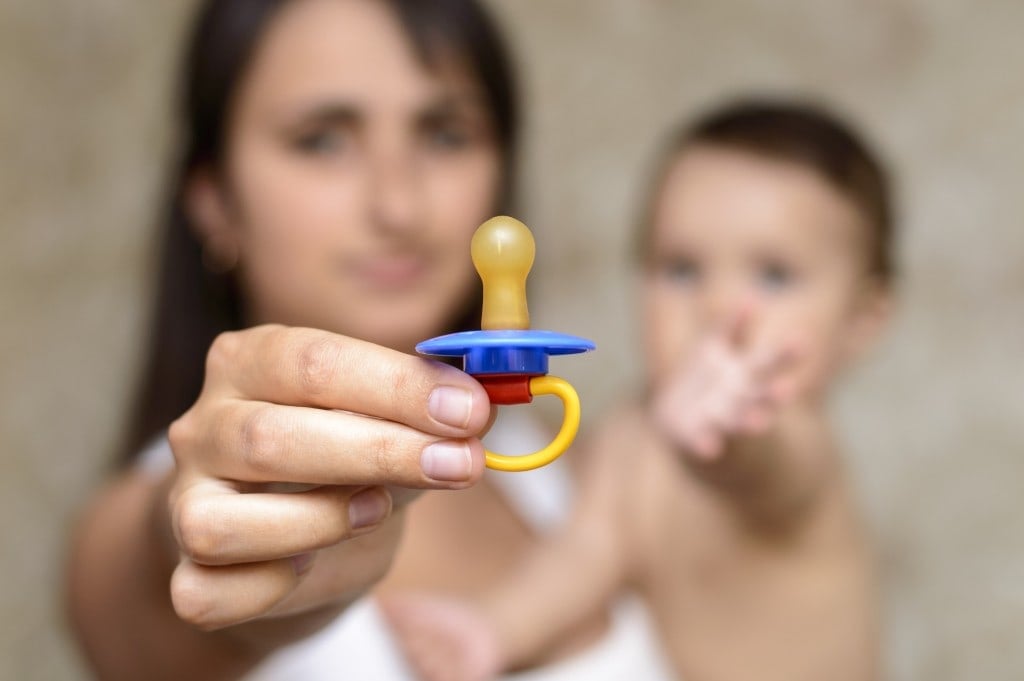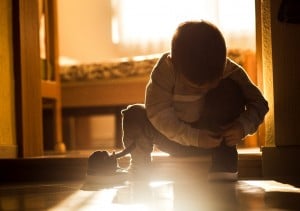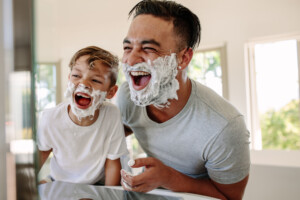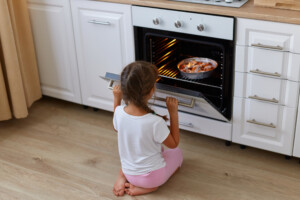A pacifier can be a lifeline to new parents in day-to-day life. Many parents use them to soothe babies fussing in a public setting. Some swear they help babies who are having issues falling and staying asleep. However, as babies leave the infant stage and become toddlers, the negatives of pacifier use begin to outweigh the positives. No matter how much your child loves their binky, getting rid of the pacifier will become necessary.
Pacifiers can be great for non-nutritive sucking, a normal part of development. And pacifiers have some proven benefits, such as being protective against SIDS.1 While pacifiers can be helpful, they have a time limit (as do many things your infant will use at birth!). So when should you try to wean your child from their pacifier? And how?
Getting Rid of the Pacifier: When To Do It
The American Academy of Pediatric Dentistry (AAPD) recommends that habits such as thumb sucking and pacifier sucking should be stopped by age three.2 One could argue that the pacifier is preferred over the thumb because you can’t take away your child’s thumb, but you can take away their pacifier.
Start the Weaning Process Slowly
As a pediatric dentist, my first visit with a patient generally happens around one year old. We talk about habits and whether the child is using a pacifier. At this point, I usually advise parents to keep the pacifier limited to naptime and bedtime. I also recommend that the child only have access to the pacifier in their crib (or a long car ride, plane ride, etc.). This way, you are gearing the child up to quit when the time comes. If your three-year-old is used to having their pacifier all day, it becomes a much more difficult habit to break than if they only have access to it in their crib.
Every child is different, and there are many ways to break the habit when it comes time. But if your child is used to using their pacifier only when they sleep, they will likely have an easier time quitting. Sometimes, once a child turns three, they are usually in preschool and may have dropped their afternoon nap or be ready to drop their naps entirely soon. At this point, when they go to sleep at night, they are so tired that sometimes they will fall asleep and not even realize if the pacifier is in their mouth. They may just naturally become decreasingly dependent on their pacifier!
Another great reason to quit at three is that most children will have the developmental maturity to understand quitting. They may even want to quit! I always tell parents (and children) that it is easier to break a habit if the child is on board with stopping.
Tips for Getting Rid of the Pacifier
There are endless tips and tricks for weaning your child from the pacifier. Here are some of the most effective ways I’ve helped patients quit their pacifier habit in the past:
1. Go Cold Turkey
This is usually better for children under one year old. At one year old, children develop object permanence – meaning when you take something away, they know it still exists in the world. If you wait past the age of one, you can still do it, but it will be more challenging!
2. Cut the Tip Off
Progressively cut a small amount of the nipple off the pacifier every few nights until nothing is left to suck on! FridaBaby has a product that mimics cutting the tip but with a more gradual process.
3. Sticker Charts
If your child is around three, you might want to try a sticker chart. Each day/night your child doesn’t use their pacifier, offer them a sticker to place on that day. At the end of each week, let your child pick out a small prize, and at the end of the month, let them pick out a big prize.
4. Have a Party
Collect all the remaining pacifiers and throw a “bye-bye paci party.” You can decorate a box to put the pacifiers in and make a big production out of it. Make it a celebration for everyone in the family to enjoy!
5. “Donate” to a Good Cause
Give the pacifiers away to another baby, like a cousin or friend who has a new baby.
6. Read About It
Read books about quitting the pacifier, and have lots of positive conversations about how great your child is for no longer using the pacifier. The more excited they see you are, the more excited they’ll be. Some great books for this are Pacifiers Are Not Forever by Elizabeth Verdick and Bye-Bye Binky by Maria van Lieshout.
7. Loveys to the Rescue.
Offer a “lovey” or something in place of the pacifier. Sometimes, all your child needs is a comfort item when they sleep.
Getting rid of the pacifier may be stressful for both parents and babies. Hopefully, one or more of these tips will help ease the process. These options can be combined or tweaked to fit whatever works best for your family! Whatever method you choose, stay consistent and calm, and call your pediatric dentist if you need more help.

























